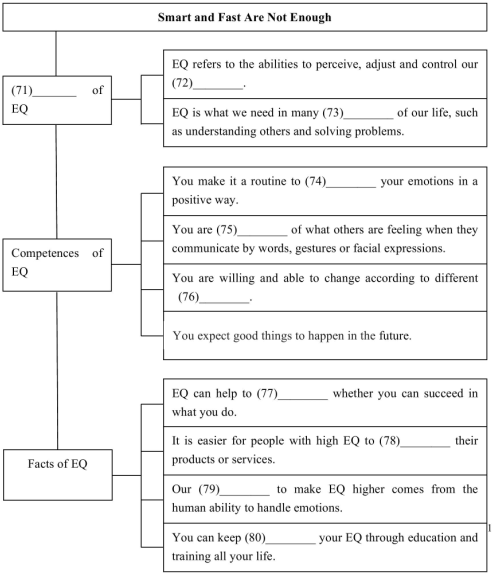题目内容
16.Many children first learn the value of money by receiving an allowance (pocket money).The purpose is to let children learn from experiences at an age when financial mistakes are not very costly.The amount of money that parents give to their children to spend as they wish differs from family to family.Timing is another consideration.Some children get a weekly allowance.Others get a monthly allowance.
In any case,parents should make clear what,if anything,the child is expected to pay for with the money.At first,young children may spend all of their allowance soon after they receive it.If they do this,they will learn the hard way that spending must be done within a budget (预算).Parents are usually advised not to offer more money until the next allowance.The object is to show young people that a budget demands a choice between spending and saving.Older children may be responsible enough to save money for larger costs,like clothing or electronics.
Many people who have written on the subject of allowances say it is not a good idea to pay your child for work around the home.These jobs are a normal part of family life.Paying children to do extra work around the house,however,can be useful.It can even provide an understanding of how a business works.
Allowances give children a chance to experience the three things they can do with money.They can share it in the form of gifts or giving to a good cause.They can spend it by buying things they want.Or they can save it.
Saving helps children understand that costly goals require sacrifice.You have to cut costs and plan for the future.Requiring children to save part of their allowances can also open the door to future saving and investing.Many banks offer services to help children and teenagers learn about personal finance.A saving account is an excellent way to learn about the power of compound interest.
Compounding works by paying interest.So,for example,one dollar invested at two percent interest for two years will earn two cents in the first year.The second year,the money will earn two percent of one dollar and two cents,and so on.That may not seem like a lot,but over time it adds up.
32.Parents give their children allowances in order toC.
A.show off their wealth of family
B.let them make more money
C.learn the value of money
D.help children manage family finance
33.What is the second paragraph mainly about?D
A.The time to give allowances
B.The way to spend alloweances.
C.the amount of allowances given to children.
D.Considerations taken to give allowances.
34.Why are parents adivsed to offer yougn children allowances stricktly as planned?A
A.To help children learn to make a budget.
B.To have children save money for larger costs.
C.To let children make fewer mistakes.
D.To give them more allowances next time.
35.What does the author intend to tel lthe readers?C
A.The methods of limiting allowances.
B.The advice on a better family budget.
C.Teaching children to use allowances wisely.
D.Offering allowances to children properly.
分析 这是一篇记叙文,本文讲述的是孩子处理零花钱的方式以及家长在钱的问题上如何教育孩子问题.
解答 CDAC
32:答案 C 细节理解题.由第一段"Many children first learn the value of money by receiving an allowance(pocket money).The purpose is to let children learn from experiences at an age when financial mistakes are not very costly."可知,父母给孩子零花钱是为了让他们从小就通过实践理解到金钱的价值,故正确答案为C.33:答案 D主旨大意题.第二段"The amount of money that parents give to their children to spend as they wish differs from family to family.Timing is another consideration.Some children get a weekly allowance.Others get a monthly allowance."大意为"父母给孩子零花钱的多少每个家庭都会不同,时间也是一方面考虑,有的孩子一周得到一次零花钱,有的孩子一月一次".由此可知,第二段介绍的是给孩子零花钱时所考虑的因素,故正确答案为D.
34:答案 A 细节理解题.由第三段倒数第二句"Parents are usually advised not to offer more money until the next allowance.The object is to show young people that a budget demands a choice between spending and saving."可知,父母应该按计划给孩子发零花钱,目的是为了让孩子们知道,消费和储蓄之间存在选择.即帮助孩子学着做预算,故正确答案为A.
35:答案 C 主旨大意题.文章主要讲通过给孩子零花钱来教育孩子怎样合理使用零花钱,如买想要的东西,存起来等等,从而培养孩子的金钱观念,所以C项正确.A项,限制零花钱的方法,偏离文章主旨,所以A项错误.B项,对家庭预算的建议,偏离文章主旨,所以B项错误.D项,合理地给孩子发零用钱,只是文章一部分内容,所以D项错误.故正确答案为C.
点评 任何一种阅读方法或技巧的使用,都是由篇章特点和试题本身的要求决定的,应根据不同的体裁和试题要求采取不同的策略.
1、浏览.浏览的主要目的就是确定文章的体裁.如果文章属于人物传记、记叙文、故事、科普小品和有关社会文化、文史知识的文章,一般来说,应该先看看文章的试题考查内容,对题目类型做到心中有数,针对不同问题,在通读时有粗有细地去阅读,这样不仅能把握篇章的基本结构和逻辑线索,也能做好有关具体事实信息考查的试题.
2、挖掘寓意,掌握中心思想,推出结论.任何文章,作者在行文时都有一定的写作目的和主要话题.在通读篇章时应该吃透作者的写作意图,抓住文章的主题句,充分发挥自己的想象力和概括力,作出对中心思想的归纳和结论的推断.
3、把握篇章结构,利用上下文进行推测.高考中的阅读理解篇章往往是一个较完整的短文,其结构、思想,前后上下连贯统一.考试时应充分利用这一特点推测一些生词、短语在句中的含义,切莫盲目孤立猜测.
4、综观全篇,前后呼应.这是阅读理解的最后一步,在做完阅读理解题后,要立足于文章整体,再迅速读一遍短文,短文中的问题和答案的设置前后都是相关联的,有着一定的连续性,体现着文章的基本脉络.

| A. | in debt | B. | in general | C. | in advance | D. | in fact |
